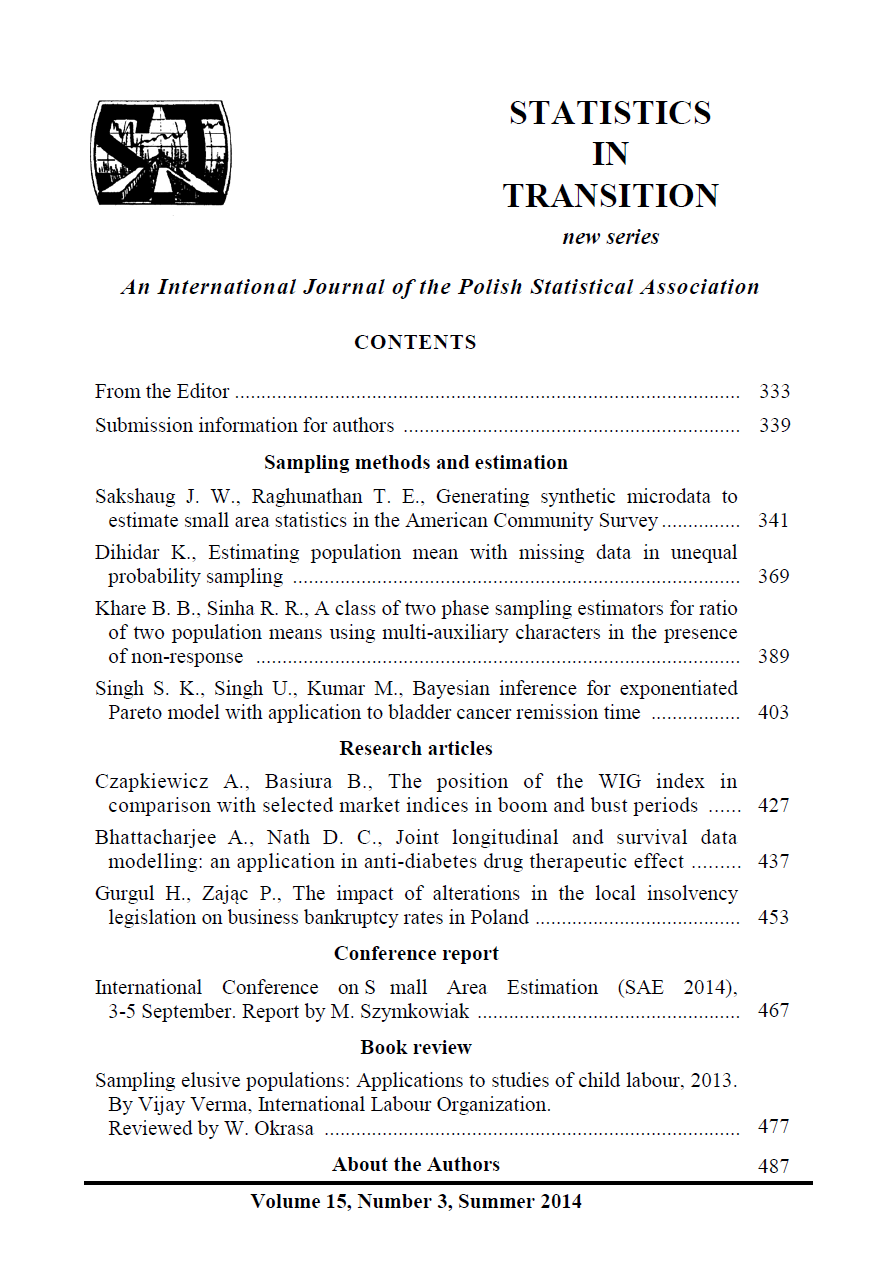ARTICLE
ABSTRACT
The main aim of this work is to discover the differences between the rank of Polish stock market in the boom and the bust cycles. The data of the daily stock market returns for the twenty three major international indices from Europe, America and Asia are used in the research. Two boom and two bust periods are considered. The correlation coefficient obtained from Copula-GARCH model is a similarity measure between the considered indices returns. The cluster analysis carried on for these series in the boom and bust the cycles allows us to find the differences in the market behaviour
KEYWORDS
clustering stock indices, dependence parameter, Copula-GARCH model.
REFERENCES
BASIURA, B., CZAPKIEWICZ, A., (2010). Clustering Financial Data Using Copula-GARCH Model In an Application for Main Market Stock Returns, Statistics in Transition (New Series), Poland, Vol. 11, No. 1, pp. 25–45.
BONANNO, G., LILLO, F., MANTEGNA, R. N., (2001). High-frequency cross correlation in a set of stocks, Quantitative Finance 1, pp. 96–104.
BREYMANN, W., DIAS ,A., EMBRECHTS, P., (2003). Dependence Structures for Multivariate High-Frequency Data in Finance, Quantitative Finance, 3, pp. 1–14.
DIEBOLD, F. X., GUNTHER, T. A., TAY, A. S., (1998). Evaluating Density Forecasts with Applications to Financial Risk Management, International Economic Review, 39(4): pp. 863–883.
EMBREECHT, P., MCNEIL, A. J., STRAUMANN, D., (2001). Correlation and dependency in risk management: properties and pitfalls, In: M. Dempster,H. Moffant, Risk Management, Cambridge University Press, New York, pp. 176–223.
EMBRECHTS, P., LINDSKOG, F., MCNEIL, A., (2003). Modeling Dependence with Copulas and Applications to Risk Management, In: Rachev, S.T. (Ed.), Handbook of Heavy Tailed Distributions in Finance, Elsevier/North-Holland, Amsterdam.
JOE, H., XU, J. J., (1996). The estimation method of inference function for margins for multivariate models, Technical Report, Departments of Statistics, University of British Columbia.
MASHAL, R., ZEEVI, A., (2002). Beyond Correlation: Extreme co-movements Between Financial Assets, Mimeo, Columbia Graduate School of Business.
MANTEGNA, R. N., (1999). Hierarchical structure in financial markets, European Physical Journal B 11, pp. 193–197.
MIRKIN, B., (2005). Clustering for Data Mining: A Data Recovery Approach, Boca Raton Fl., Chapman and Hall/CRC.
PATTON, A. J., (2006). Estimation of multivariate models for time series of possibly different lengths, Journal of Applied Econometrics, John Wiley & Sons. Ltd., 21(2): pp. 147–173.
ROSENBLATT, M., (1952). Remarks on a Multivariate Transformation, The Annals of Mathematical statistics, 23, pp. 470–472.
R Development Core Team, (2004). R: A Language and Environment for Statistical Computing, R Foundation for Statistical Computing, Vienna, Austria, ISBN is 3-900051-07-0 URL http://www.Rproject.org.
SHIH, J., LOUIS, T. A., (1995). Inference on the Association Parameter in Copula Models for Bivariate Survival Data, Biometrics, 51: pp. 1384-1399.
SKLAR, A., (1959). Fonction de Repartition a n Dimension et Leur Marges, Publications de L’Institut de Statistiques de L’Universite de Paris, 8, pp. 229–231.
TRIVEDI, P. K., ZIMMER, D. M., (2005). Copula Modeling: An Introduction for Practitioners, Foundations and Trends in Econometrics, Vol. 1, No 1, pp. 1–111, ed. Now, the Essence of Knowledge.
WARD, J. H., (1963). Hierarchical Grouping to Optimize an Objective Function, Journal of the American Statistical Association, 58, pp. 236–244
